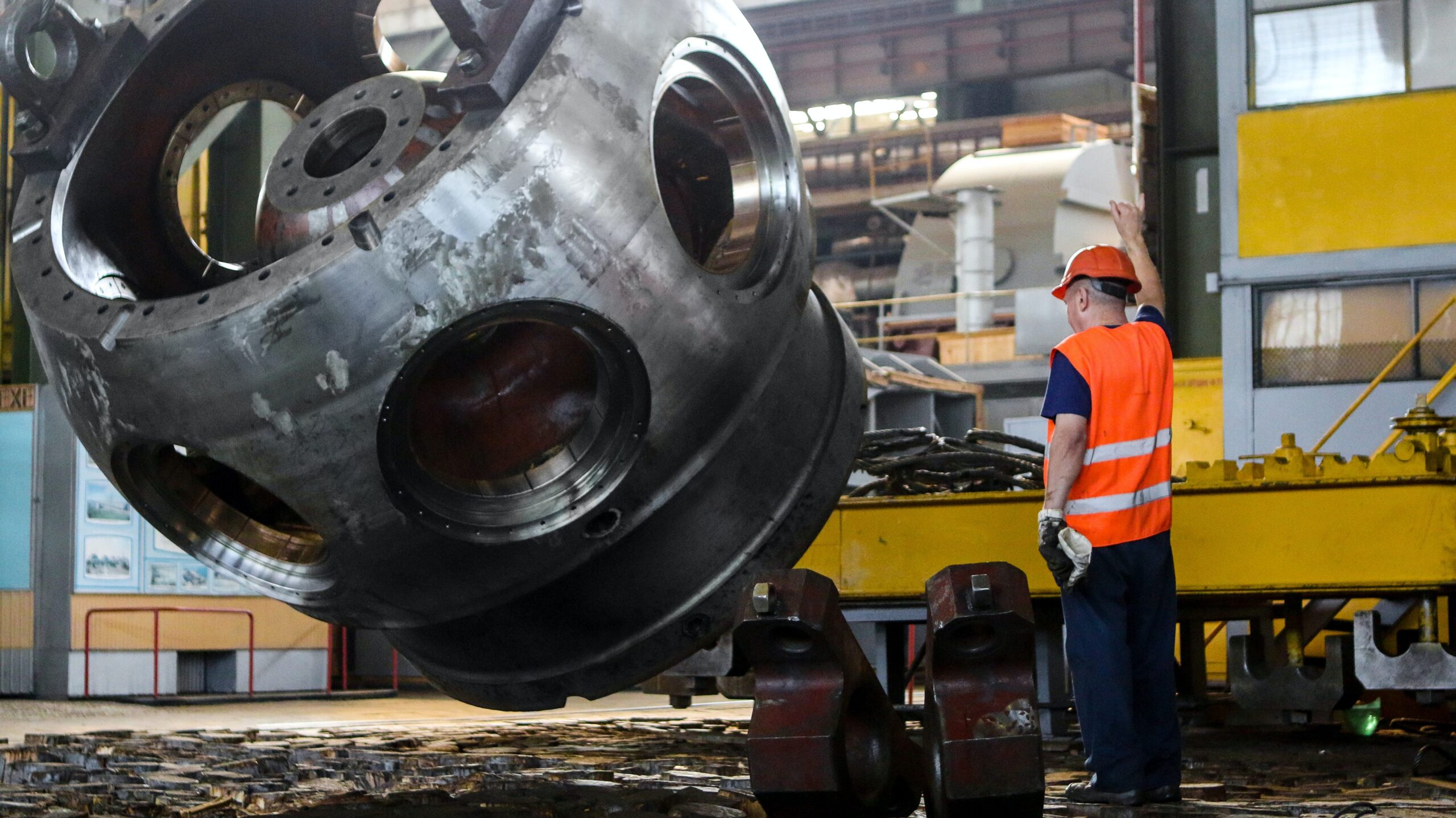Employer vs Employee Health and Safety Responsibilities
Ensuring a safe and healthy workplace is a shared responsibility between employers and employees. Both parties play crucial roles in fostering an environment where safety is a priority.
By understanding the responsibilities of each party and clearly defining these roles, employers and employees can address potential hazards effectively and create a culture of safety.
What Health and Safety Rights Do Employees Have?
Employees have several health and safety rights that are designed to protect their wellbeing in the workplace. It’s important for employees to be aware of these rights and to raise any concerns with their employer if they feel these rights are not being met.
Employers have a duty to adhere to these rights and to provide a safe and healthy working environment for their employees. In the UK, these rights include:
1. Right to a Safe Workplace – Under the Health and Safety at Work Act 1974 (HSWA) employees have the right to work in an environment where risks to their health and safety are properly controlled. Employers are legally obligated to provide a safe working environment and to manage risks to employees’ health and safety.
2. Right to Information – According to the Management of Health and Safety at Work Regulations 1999 (MHSWR) employees have the right to be informed about health and safety matters that affect them. This includes receiving information about workplace hazards, risks identified through risk assessments and the measures in place to control those risks.
3. Right to Training – Employees have the right to receive adequate training on health and safety procedures and practices relevant to their role, as outlined in the HSWA and MHSWR. This training should cover how to work safely, the proper use of equipment and machinery, and emergency procedures.
4. Right to Refuse Unsafe Work – Under the Employment Rights Act 1996 employees have the right to refuse to work if they believe there is a serious and imminent danger to their health and safety or that of others. Employees also have a right not to be disciplined for this or for contacting the HSE about these concerns.

Who Is Responsible for Workplace Health and Safety?
Ensuring health and safety in the workplace is a shared responsibility involving business owners, managers, supervisors, contractors and staff on all levels. However, this responsibility is not shared equally. Employers hold more responsibility than their staff as they are liable for the health, safety and wellbeing of their employees.
Employers Legal Responsibilities
Employers have legal and moral obligations to provide a safe working environment. Many of these responsibilities are managed under the Health and Safety at Work Act 1974 (HSWA), which sets the minimum standards for workplace safety. Key responsibilities include:
1. Conduct a Thorough Risk Assessment
Under the HSWA and MHSWR, employers are required to conduct regular and thorough risk assessments. They require employers to identify all potential hazards in the workplace, evaluate the associated risks and implement measures to control and mitigate these risks. Employers with five or more employees must keep an official record of their findings.
2. Implement Protective Measures
Once identifying the risks facing employees, employers have a responsibility to mitigate these risks as far as “reasonably practicable”. Where risks cannot be adequately controlled by other means, employers must provide PPE free of charge and ensure it is suitable for the risks involved, maintained properly, and used correctly.
This may involve implementing personal safety technology, such as Peoplesafe, which provides employees with a means to access emergency help 24/7. Peoplesafe offers features like GPS tracking, discreet alarm activation and instant connection to emergency response, ensuring that help is always available.
3. Maintain Health and Safety Policies
Under the HSWA employers must establish written policies which outline the organisation’s commitment to health and safety, including responsibilities at all levels of the workforce. The policies should be regularly reviewed and updated to reflect any changes in operations or legislation, ensuring they remain relevant and effective in protecting the workforce.

4. Provision of Information, Instruction, and Training
Under the HSWA and MHSWR, employers must provide employees with sufficient information, instruction and supervision to ensure their health and safety. This includes specific training on the safe use of equipment, handling of hazardous substances and procedures for emergencies. Regular refresher training sessions are essential to maintain competence and awareness among employees.
5. Maintenance of Workplace Conditions
The HSWA and the Workplace (Health, Safety and Welfare) Regulations 1992 mandate that employers maintain workplace conditions that are safe and without risks to health. This includes ensuring that machinery, equipment, and systems of work are maintained in a safe condition. Regular inspections and maintenance schedules help identify and rectify potential hazards before they pose a threat to employee safety.
6. Consult with Employees
Under the HSWA and the Health and Safety (Consultation with Employees) Regulations 1996, employers must consult with employees on matters affecting their health and safety. This includes discussing risk assessments, proposed changes in work practices and the introduction of new equipment or substances that could affect safety. Effective consultation ensures that employees’ views are considered in decision-making processes that impact their health and safety.
7. Establish Emergency Procedures
The HSWA and the MHSWR require employers to establish and maintain effective emergency procedures. This includes having clear escalation plans, providing adequate first aid facilities, and ensuring employees are trained in emergency response protocols. Regular drills and simulations help familiarise employees with these procedures, ensuring a swift and coordinated response in the event of an emergency.
8. Monitoring and Review
Enforced under the HSWA and supported by various regulations, including RIDDOR, employers are responsible for monitoring the effectiveness of their health and safety measures. This involves investigating accidents or incidents, analysing trends and taking corrective actions to prevent the reoccurrence of incidents.
9. Duties towards Others
Under the HSWA, employers have a duty of care towards persons other than their employees, including contractors, visitors, and the public. They must ensure, as far as reasonably practicable, that their activities do not pose risks to the health and safety of these individuals. This duty extends to providing information, instruction and supervision where necessary to protect non-employees from workplace hazards and risks.
10. Reporting Injuries, Diseases and Dangerous Occurrences
Under the Reporting of Injuries, Diseases and Dangerous Occurrences Regulations 2013 (RIDDOR), employers, self-employed people and people in control of premises are legally required to report certain serious workplace accidents, occupational diseases, and specified dangerous occurrences to the Health and Safety Executive (HSE).
Employers must ensure that all reportable incidents are promptly and accurately documented and reported to the HSE within the required time frame (typically 10 days) and that a thorough investigation is conducted to determine the cause of the incident and implement measures to prevent a recurrence.
11. Employers Moral Responsibilities
Beyond legal obligations, employers have a moral duty of care to protect their employees, including creating a safe work environment that prevents physical and psychological harm.
Employers should lead by example, promoting a culture that prioritises employee wellbeing and mental health. Additionally, employers should foster a supportive and psychologically safe environment where employees feel comfortable reporting hazards and concerns without fear of retaliation.

Employee Responsibilities
Employees also have significant legal and moral responsibilities in maintaining workplace safety. These include:
1. Adhere to Safety Protocols
Employees have a legal responsibility under the HSWA and the Personal Protective Equipment at Work Regulations 1992 to adhere to safety protocols set by their employer. This includes using machinery and equipment correctly, wearing provided PPE where required and following established safety procedures.
2. Use Equipment as Intended
Under the HSWA and the Provision and Use of Work Equipment Regulations 1998 (PUWER), employees are required to use tools, machinery and equipment according to manufacturer instructions and the training provided by their employer.
The HSWA states. “No person shall intentionally or recklessly interfere with or misuse anything provided in the interests of health, safety or welfare.” and “No person shall recklessly interfere with or misuse work equipment. Or anything else for that matter that may increase the risks to health, safety or welfare.”
This includes PPE, such as personal safety technology. Employees must carry this technology with them and use it correctly and responsibly. This ensures that they have access to the emergency help provided by their employers in case of an emergency.
3. Protect Themselves and Others
Employees have a legal duty under the HSWA to take reasonable care of their own health and safety, as well as that of others who may be affected by their actions at work. This responsibility extends to cooperating with their employer on health and safety matters, attending training sessions and adhering to safety guidelines to protect themselves and others from harm. The act states that:
“It shall be the duty of every employee while at work—
to take reasonable care for the health and safety of himself and of other persons who may be affected by his acts or omissions at work; and
as regards any duty or requirement imposed on his employer or any other person by or under any of the relevant statutory provisions, to co-operate with him so far as is necessary to enable that duty or requirement to be performed or complied with.”
4. Inform Their Employer
Employees are obligated to promptly notify their employer of any changes that could impact their ability to work, such as becoming pregnant, experiencing an injury, or starting a new medication. This ensures that the employer can fulfil their duty to maintain a safe working environment by assessing potential risks and adjusting arrangements as needed. By notifying their employer, employees allow for a review of their duties and potential risks.
5. Report Health and Safety Concerns
Employees are not expected to be health and safety experts, but under the MHSWR they do have a responsibility to report any health and safety concerns that someone with their training and instruction would reasonably identify.
This includes hazards, unsafe practices or any conditions that could potentially cause harm.
“…any matter which a person with the first-mentioned employee’s training and instruction would reasonably consider represented a shortcoming in the employer’s protection arrangements for health and safety…”
Under RIDDOR, employees must immediately report any injury, disease, or dangerous occurrence to their supervisor or the designated safety officer. They must provide accurate and detailed information about the incident, including any contributing factors, to assist in the investigation process and should cooperate with any investigations carried out by the employer or safety authorities.
6. Employees Moral Responsibilities
Employees also have a moral responsibility to look out for their own safety and the safety of others. This includes being vigilant, avoiding risky behaviour and encouraging others to follow safety protocols. Employees should also cooperate with their employer’s safety initiatives, including taking part in safety drills and supporting a culture of safety.

Who Enforces Health and Safety Law in the UK?
The Health and Safety Executive is the primary regulatory body responsible for enforcing health and safety laws in most workplaces, including factories, construction sites, offices, mines, and offshore installations. The HSE investigates incidents, enforces legal requirements, provides guidance and advice and prosecutes breaches of health and safety law.
Local authorities enforce health and safety legislation in certain workplaces such as shops, restaurants, hotels, leisure facilities, and offices. They have the authority to inspect premises, investigate complaints, and take enforcement action where necessary.
There are also specialised regulatory agencies that oversee specific industries and sectors, including The Office for Nuclear Regulation (ONR), the Office of Rail and Road (ORR) and the Maritime and Coastguard Agency (MCA).
What to Do If You Have Concerns About Your Health and Safety at Work
If you have concerns about your health and safety at work, it’s essential to take immediate action. Start by reporting your concerns to your supervisor or manager as soon as possible, providing clear details of the issue or hazard you’ve identified. Document the incident or condition, including dates and any previous reports made.
As a last resort, you may need to report your employer to the Health and Safety Executive or to the environmental health department of your local authority. If you are dismissed for refusing to undertake an unsafe working practice, you may have a right to claim unfair dismissal at an Employment Tribunal.
Conclusion
The responsibility for health and safety in the workplace is a collaborative effort that goes beyond compliance. Employers must provide the resources, training and policies necessary for a safe working environment, while employees must adhere to these guidelines and take personal responsibility for their actions. By working together, both parties can create a safer, healthier and happier workplace.




